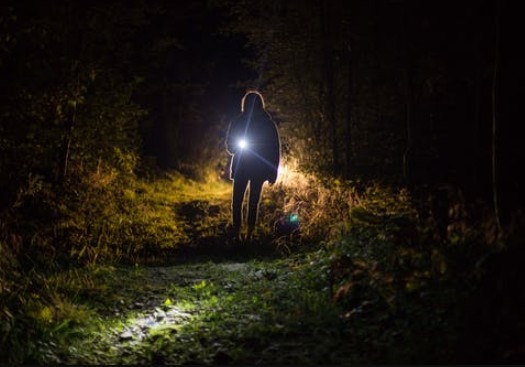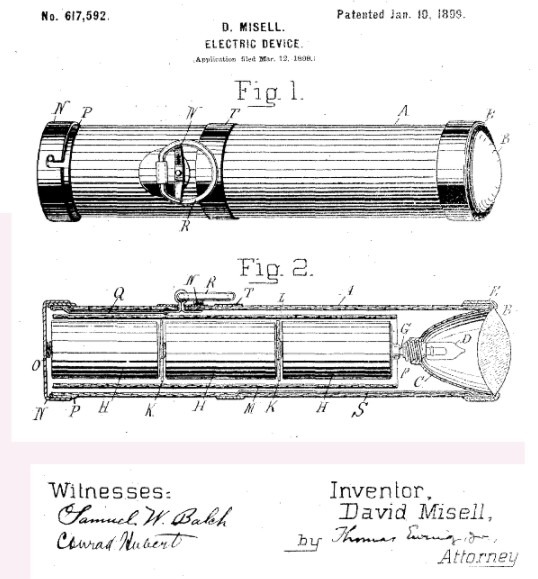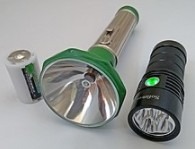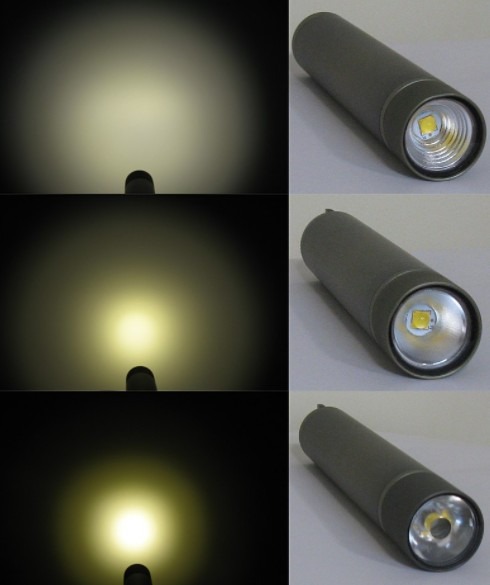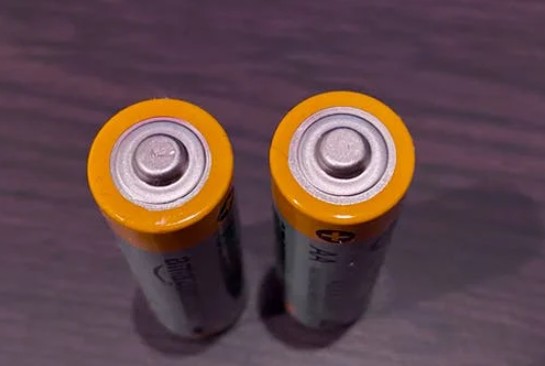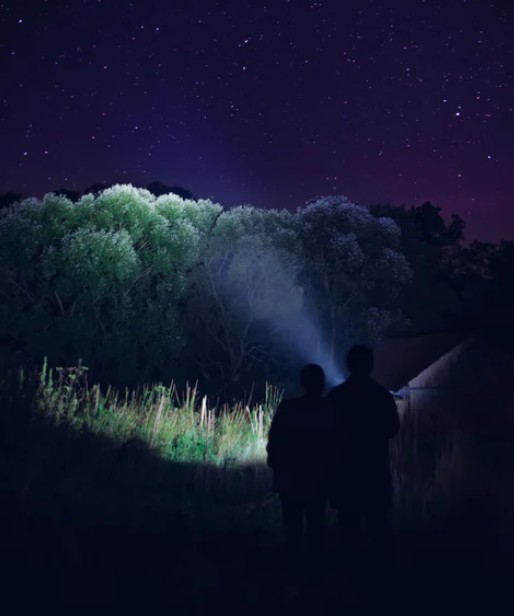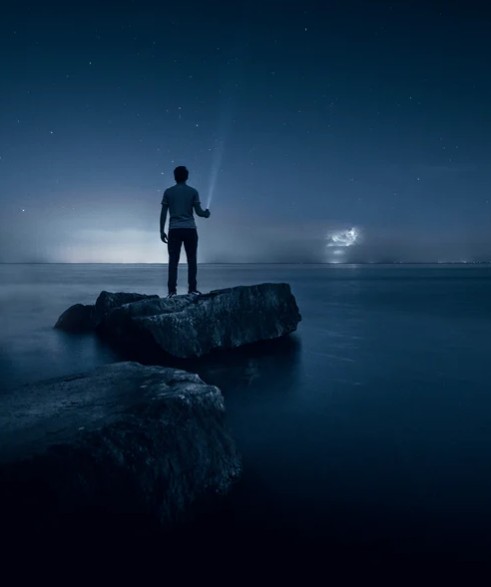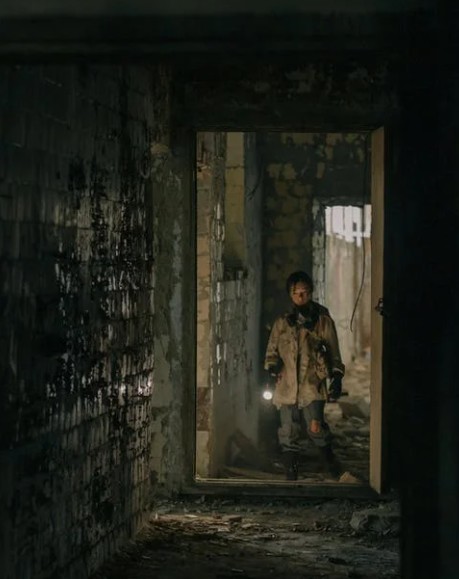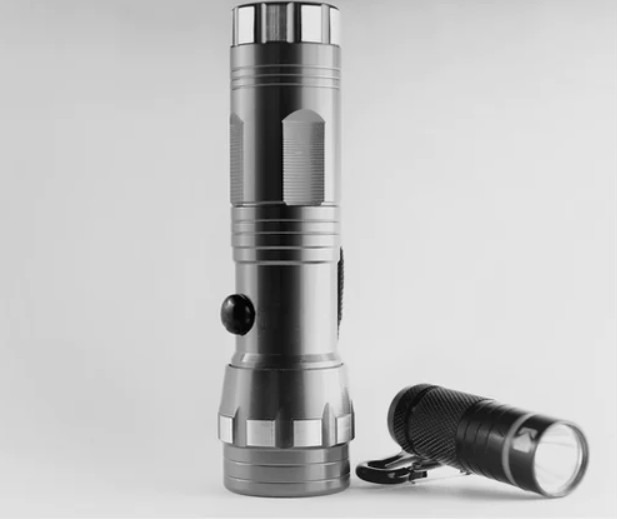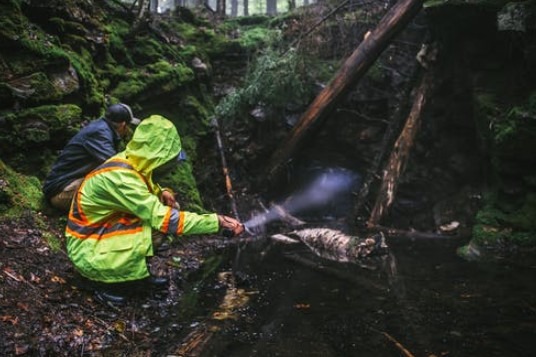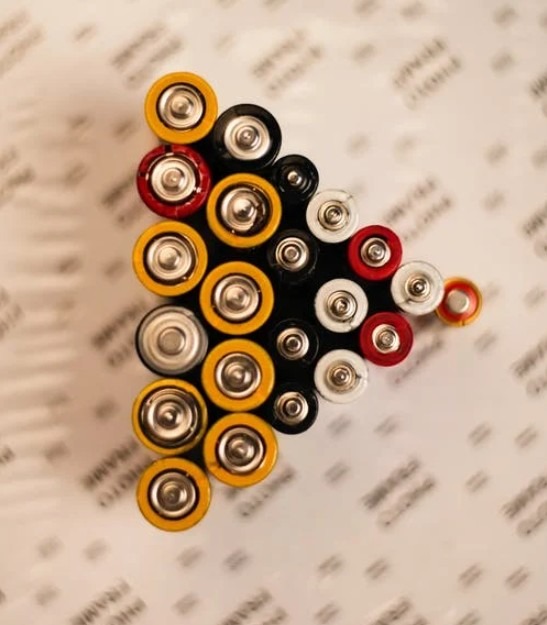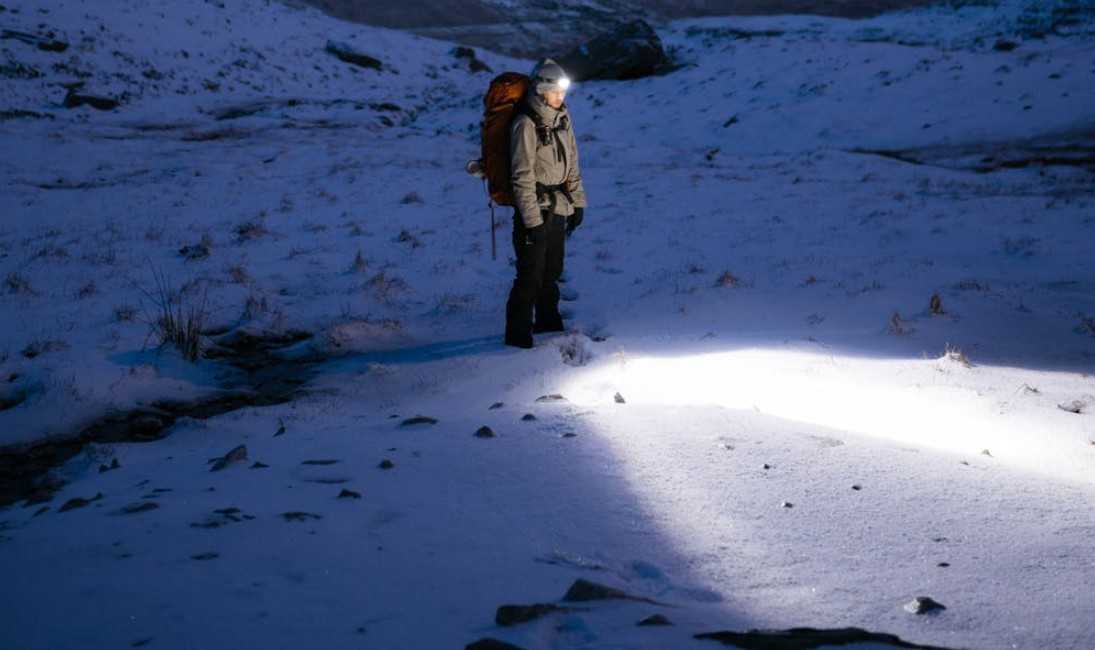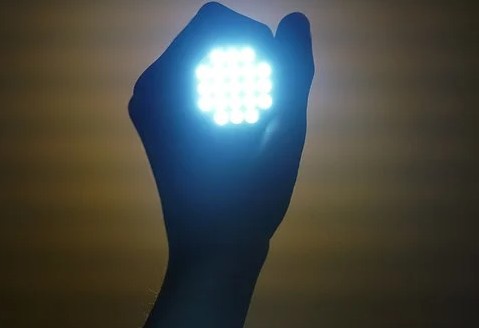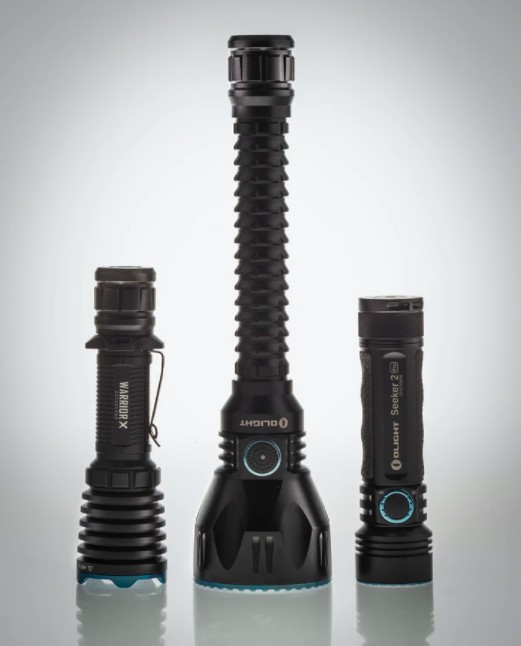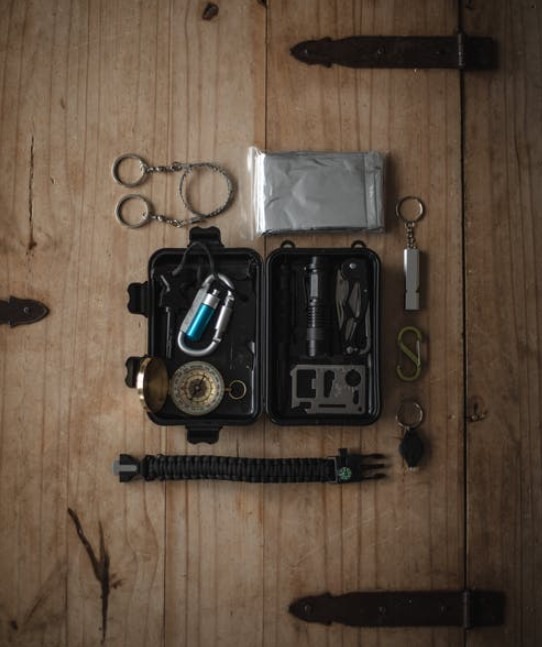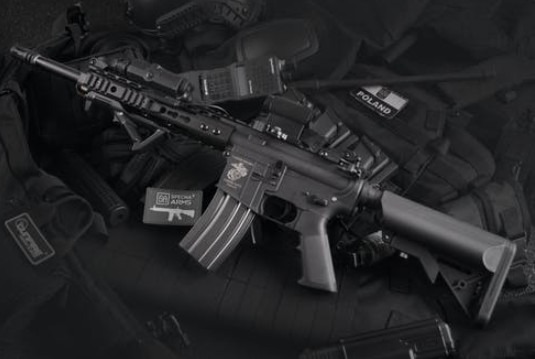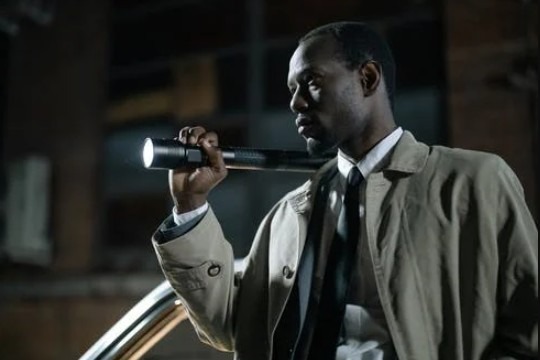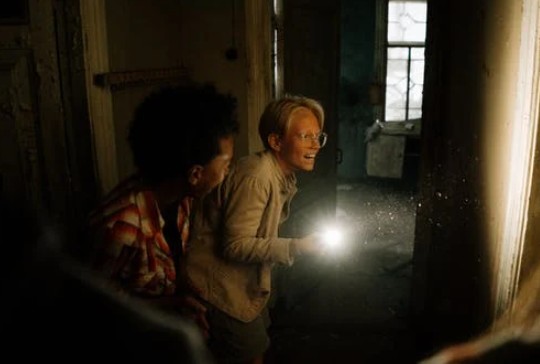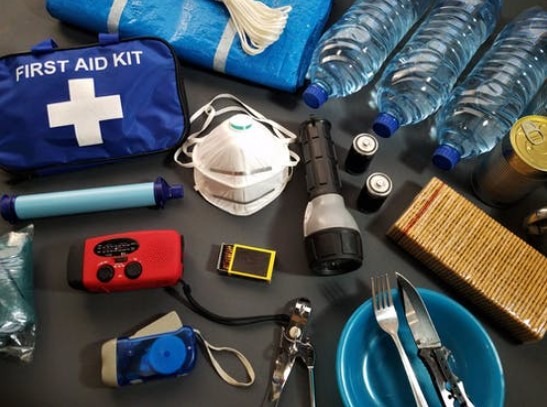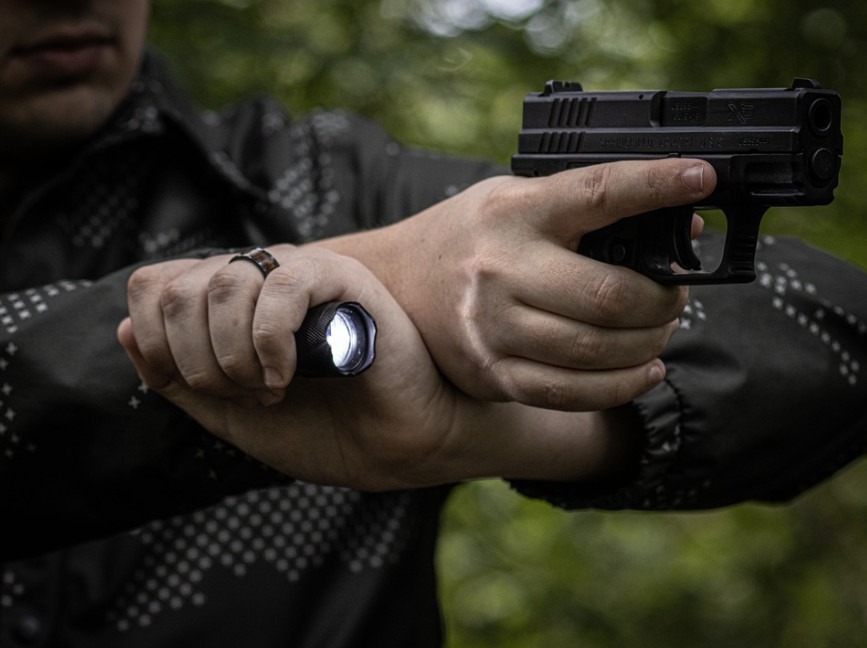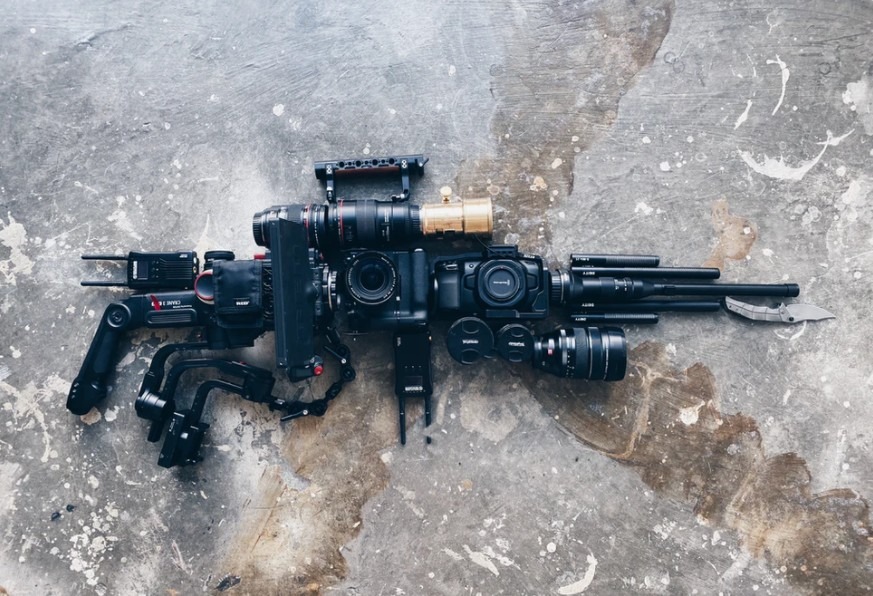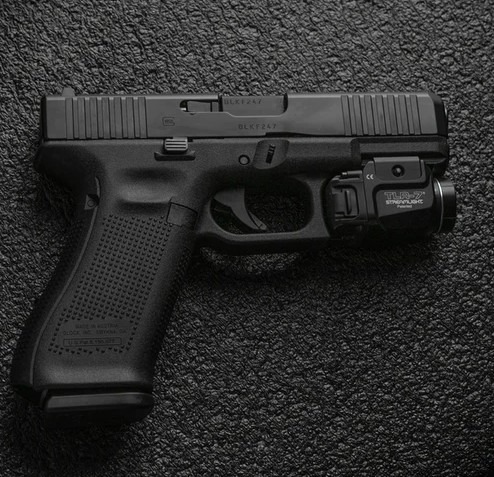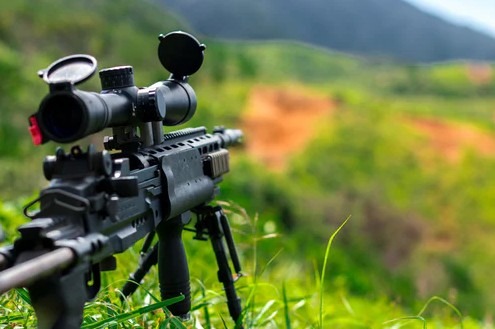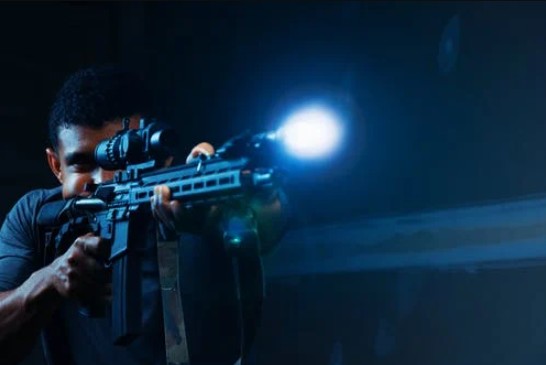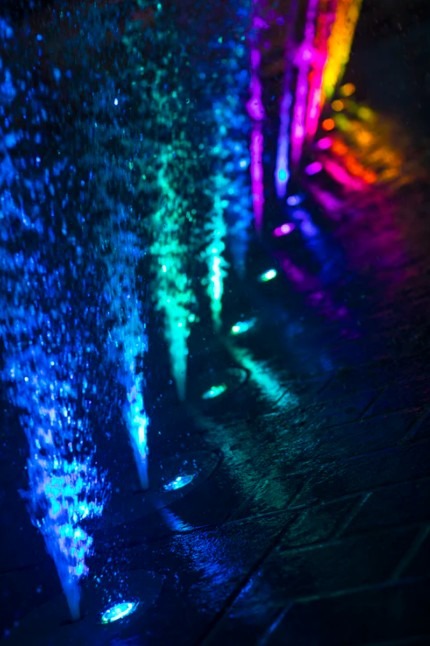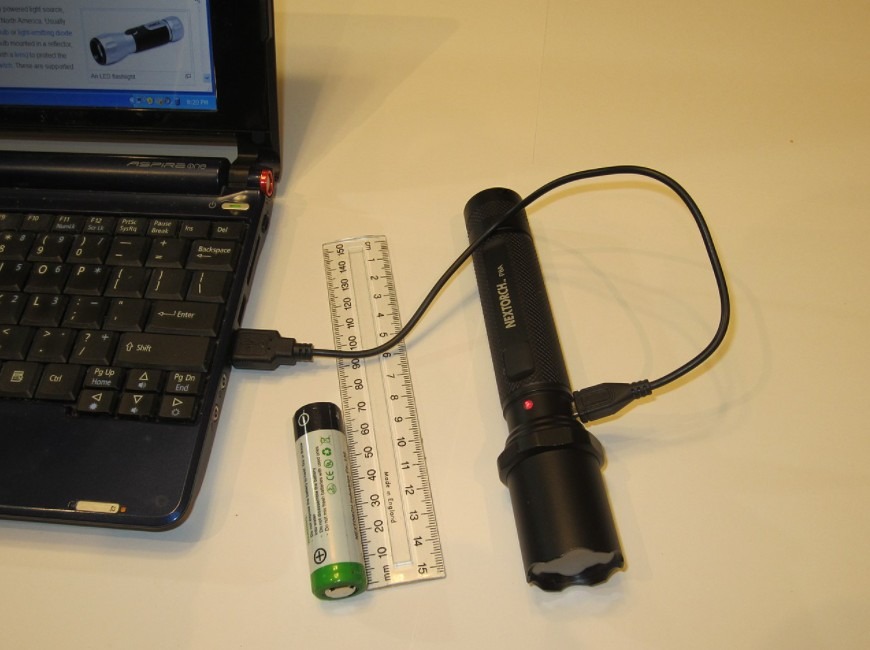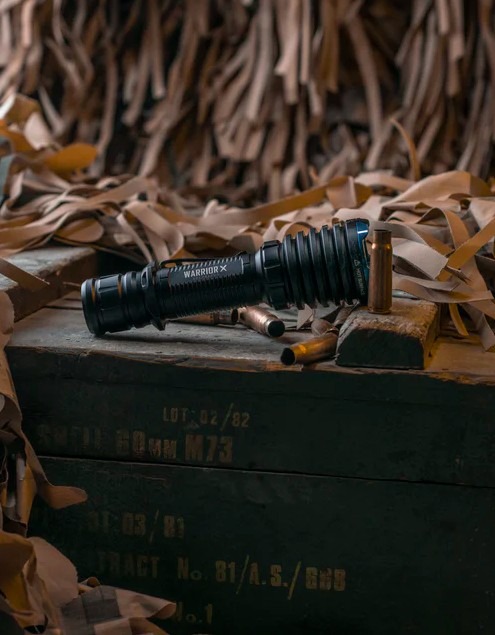A flashlight is also known as a torch is a portable electric torch. Previously, the light source was usually a miniature incandescent light bulb. Since the mid-2000s, it has been replaced by light-emitting diodes (LEDs). A flashlight is usually having a light source mounted on the reflector, a transparent cover that is sometimes combined with a lens to protect the light source and reflector. It consists of a switch and a battery enclosed in a case.
The invention of wet cells and miniature electric incandescent lamps brought the first battery-powered lanterns or flashlights around 1899. Flashlights today primarily use light-emitting diodes and they are powered by rechargeable or disposable batteries. Some flashlights are powered by shaking the lamp, turning the crank, or squeezing it. Also, some flashlights are powered by solar panels that recharge the battery. Flashlights are used in outdoor activities where there is no permanent lighting.
Ultimate Guide to Flashlights
Flashlights are also used in hunting, outdoor activities, power outages, and when you need a portable source of light. In addition, the use of hand-held flashlights has adopted many forms of use. Helmet- or head-mounted flashlights are designed for the campers or miners to keep their hands free. Some flashlights are designed for use in the flammable atmosphere or under the water.
The earliest flashlights were power by zinc-carbon batteries that could not provide a constant electric current. To keep it working, it required a periodic pause. The early flashlights used energy-efficient carbon filament bulbs that required resting or sleep at short intervals. Therefore, they could only be used for brief flashes, hence the common North American name of the flashlight.
History of Flashlights
The first dry cell battery was invented in 1887. The previous cells used to have a paste of electrolyte than a liquid. It was suitable for portable devices because it did not break easily or tip over. Also, it was able to work in any orientation. The first mass-produced dry cells arrived in 1896 and the invention of the electric lights quickly followed. The portable electric lights offered convenience and safety over lanterns, candles, and combustion torches.
The electric lamp or flashlight was smokeless, odorless, and emitted less combustion lighting. It avoided the risk of fire and could easily be turned on or off at an instant. On January 10, 1899, British inventor David Misell obtained U.S Patent No. 617,592. It was assigned to the American Electrical Novelty and Manufacturing Company. The electric device that was designed by Misell was powered by D batteries.
The D batteries were placed back and forth in a paper tube with a bulb. There was a raw brass reflector at the end to use as a flashlight. Some of the devices were donated to the New York City Polity by the company. They responded favorably.
Carbon-filament bulbs and rather rudimentary dry cells made early flashlights. They were an expensive novelty with low interest and low sales from the manufacturers. The tungsten filament lamp was developed in 1904. It was three times efficient than carbon filament types with an improved battery. Hence, it made flashlights more popular and useful. The benefit of instant control and the removal of flame made hand-held electric lights began to replace combustion lights such as hurricane lanterns.
Evolution of Flashlights
By 1922, several types of flashlights were available such as the tubular hand-held variety. A style of the lantern that can be attached for use, large reflector-type searchlight lamps for illuminating distant objects, flashlights for close-up work, etc. By 1922, there were approximately 10 million flashlight users in the United States. Later on, they were popular in China.
In the late 1930s, 60 companies were making flashlights. Some of the companies sold for as little as one-third the cost of equivalent imported models of flashlights. Miniature lamps were developed for automotive uses and flashlights became an important part of the incandescent lamp manufacturing business. In the early 2000s, LED flashlights were manufactured for the first time. Maglite was the first tone to manufacture LED flashlight in 2006.
Characteristics of Flashlights
There are some important characteristics of flashlights that you need to know before you choose one for your needs.
Light Output
To consider the light output of a flashlight, lumens are generally considered. Some manufacturers list the actual lumens of the light they offer in their flashlights. On the other hand, some of the companies mention the potential lumens a flashlight can produce. For better results, the actual rating of the lumens is the best option.
Battery Types and Running Time
Most flashlights are powered by rechargeable or alkaline batteries. The rechargeable batteries come with lithium-ion batteries. The run time of the rechargeable flashlights can range from 30 minutes to over 30 hours.
Size and Weight
The size of the flashlight does not affect the lumens it can deliver. A very small or handy flashlight with higher lumens can do the work that a medium-sized or big flashlight cannot. The weight of the flashlight can depend on the function or components of the flashlight. For example, outdoor and tactical flashlights weigh more than portable flashlights because of their function and shape.
This is why the size and weight of the flashlight do not matter. People tend to look for higher lumens even if it comes in small size and lighter weight. Instead of carrying a heavy and large size flashlight, a pocket flashlight with higher lumens can do the work. The brightest flashlights use modern technology, bulbs, and batteries. As a result, you get a constant beam of light just like your car.
Rechargeable batteries provide an increased output but you might have to pay extra dollars for rechargeable batteries. Impact resistance, waterproofing, and multiple lighting modes increase the value of the flashlight.
Flashlight Terms
There are few definitions of the terms that are used to define the flashlight’s specifications. So, you should know what is an AR Coating or what are energy-efficient flashlights.
AR Coating
Flashlights having AR Coating are having an anti-reflective coating. It is added to the lens of the flashlight.
Bezel
The bezel is the front part of the flashlight. It includes a lens, reflector, and bulb.
Candlepower
At a specific distance, the measurement of the brightest spot of a flashlight beam. It differs from the lumen rating. Lumen rating is a measurement of the entire output of the flashlight bulb.
CFL
Compact Fluorescent (CFL) is an energy-efficient alternative to an incandescent light bulb.
CR123
CR123 is a common disposable lithium battery. It offers a consistent power ratio to the flashlight.
Die
It is the part of the LED in the flashlight that produces light.
Fast Charging
Some flashlights come with fast rechargeable batteries. This term is used for the compatibility of foreign electrical currents and outlets of flashlights.
NiCad
It is a type of rechargeable battery that is composed of cadmium and nickel. The flashlights having NiCad batteries are considered high-performance tolls for rugged user experience.
NiMH
This type of rechargeable battery is composed of metal hydride and nickel. These are suitable for use in camping, residential applications, and similar situations.
Peak Beam Strength
It is a similar measurement to the Candlepower. This measurement standard focuses on the brightest spot of the flashlight. The rating depends on the focused beam being the highest.
Reflector
Reflector surrounds the light source in flashlight. Without it, a flashlight cannot throw a beam with focus. With different and advanced types of reflectors, you can get different types of brightness from the flashlight.
How To Measure the Performance of A Flashlight?
Since 2009, there has been a criterion of testing and rating of the flashlights. Some manufacturers provide their customers with their internal testing and reporting of the flashlight. The flashlights are tested under 5 standards.
Light Output
As mentioned earlier, the light output of flashlights is measured in lumens according to the standards. The reflection of the intensity of the beam that comes from the flashlight is lumens. The outputs can range from 10 lumens to 3,500 lumens. Some flashlights have 10,000 lumens.
Beam Distance
The beam distance category is still measured in the meters. Often it is converted into feet to the internal reports from some of the flashlight manufacturers. The distance rating is a measure of how far the light can shine before it fades in the standard moonlight.
Running Time
The running time is measured in hours. Some flashlights cannot even produce a full hour of operation. Running time means the time in which a flashlight drops to 10% from the maximum rated power when the new batteries are activated. Different flashlights come with different battery life ratings because of different light output settings.
Impact Resistance
Impact resistance defines the durability of the flashlight. For example, if the flashlight is dropped 6 times on the concrete floor from a standard distance, will the flashlight be functional or not. The impact resistance is usually measured in meters.
Water Resistance
Water-resistance flashlights are based on the IPX system standardized for water resistance. The two important water resistance standards are IPX 4 and IPX 8. IPX4 means that the flashlight should not be exposed to the water. On the other hand, IPX8 means that the flashlight can survive up to 4 hours in water at a specific depth.
Most of the brands of flashlights such as Fenix, Inova, and Maglite mention the testing and data of their flashlight on the package.
Major Functions and Features in Flashlights
Some flashlights are classified with ANSI and meet the standards. Other functions and features of a flashlight are distinguished between different models.
Battery Type
The most common type of battery used in flashlights is AA or AAA alkaline batteries. You can use the rechargeable versions of these alkaline batteries. The CR123A and 18650 rechargeable batteries are additional options that can enhance the brightness and run time of the flashlight. Also, they reduce the overall weight of the flashlight. Larger models of the flashlight might use C or D batteries instead of AA or AAA batteries.
Type Of Beam
Flashlight beams can give you fixed beamwidth. It makes it perfect for general use. The spot beams or focused beams can condense the light so that you can see at long distances in difficult conditions. The adjustable beams allow you to switch between focused and fixed options.
Bulb Type
Most of the recent flashlights using LED lighting are not the only option that you can use for different purposes. There are other options of bulbs such as incandescent bulbs, also known as krypton lights are available in newer versions or models of flashlights. On the other hand, Xenon or Halogen bulbs use gas to maximize efficiency while keeping the quality of light constant.
Controls
The location of the switch is important. Some switches of the flashlights are sliders instead of a control knob or push button. Also, some flashlights come with rotating glasses that control the power of the flashlight. This function requires two hands to complete the action. Some flashlights come with a safety lock so that you don’t accidentally turn the flashlight on.
Modes
You will notice that most of the flashlights come in a single mode. You can just turn the flashlight on. On the other hand, there are few modes of lighting in different models of flashlights. These functions or modes can be Strobe Functions, SOS Function, or even mode sequencing.
Some modern flashlights come with Bluetooth and USB connectivity. Some versions come with a silent feature that allows you to switch between functions or lighting options.
To make sure that you get the maximum output from the flashlight, always use the recommended batteries by the manufacturer. For example, if you use a flashlight with lithium-ion batteries that are not designed for this type of power, then you might end up damaging your flashlight.
Emergency or Tactical Flashlight
When you go hunting or go for an adventurous trip, you can carry a tactical or emergency flashlight that will help you in hazardous situations. A simple or regular use flashlight might not be the one that you can use while hunting. Tactical flashlights are not only for hunting or adventurous trip but also for regular use such as self-defense.
Personal Defense
One of the main reasons tactical flashlights are becoming popular is the fact they are the most unimaginable and simplest self-defense tools. If you are not able to carry your gun with you or you are traveling to or live in areas where the weapons are restricted, you can carry a tactical flashlight.
After all, no one would suspect that a simple and little flashlight is capable of shattering skulls. There are two main ways of using the tactical light when attacking:
Firstly, it will help you to identify the attacker. You know that the attacker takes an advantage of the dark to carry out the criminal activity. It helps them to do their work being unidentified. But you can surprise them by point out your tactical flashlight with the light. The bright light helps you to identify everyone around you and you might delay their attack because of sudden and bright flash into their eyes.
The strobe mode of the flashlight comes in help under attack. The strobe mode flashes out ultra-bright signals. The strobe mode always uses the maximum light output of the flashlight. You can use this mode to nest your time under attack by aiming at your attacker’s face.
The attacker will be unaware of the light signs and will try to cover the face. In this time of confusion, you own stage. Whether you decide to escape or attack.
Precise Shooting
If you are a night hunter, then you can rack up more games than before. A tactical flashlight is an essential tool that you need to add to your nighttime hunting gear for successful shooting sessions. The tactical flashlights can be mounted on a wide range of weapons. These are designed in a way that they fit firmly and directly into most track systems.
Several accessories can help you to attach the tactical flashlight to any of the rail systems of your weapon. If you are having a mounted tactical flashlight on your pistol, you will be able to more clearly identify the targets. Also, the targets that are yards away. In complete darkness, the tactical flashlight will give you a better view of your gun’s sights.
Emergency Situations
In case of power failure or emergency, a tactical flashlight will be of great help. The light emits an incredibly bright light that will illuminate your world and you can keep doing your tasks.
Search Things Around Your House
The use of tactical flashlights is not only for tactical operations outside the home. Also, you can use it at home to search for the lost items around your home. The tactical flashlight can be frequently used to search for lost toys or remote controls. Also, you can look for lost things in your garage or attic.
The tactical lights can be used as a source of backup power in the homes when the light goes out. Some tactical flashlights are having a stain on their trail that allows them to act as candles or lanterns.
Medicine Fields
A doctor in the house can use tactical flashlights for several uses. You might be missing a lot if you are not using the tactical flashlight in your house. The ultra-bright light produced by these flashlights helps the dentist to examine the patient’s teeth or throat. It helps the dentist to get an idea of the extent of strep throat or any other mouth disease.
The use of tactical flashlights is limitless. You can use them in any situation that requires a bright illumination.
Types of Tactical Flashlights
Handheld Tactical Flashlight
This tactical flashlight is more of daily transport or everyday carry (EDC). These are primarily designed to be used without a forearm. The compact design makes it easy for you to carry it anywhere such it fits in your backpack or pocket.
This lightweight flashlight does not burden you. It does not come with a rail clamping system but it does not mean that it cannot be used for hunting. You can carry it in one hand and a weapon in another. The military and police camps use this tactical flashlight for training on how to hold both tools to shoot accurately.
Top Mounted Tactical Flashlight
Another type of tactical flashlight for combat is specially designed to fit over the top of your rifle. It mounts directly and firmly to your gun without using additional tools to fix it. Once it is mounted on your rife, the flashlight will provide you good guidance while hunting. These mounted tactical flashlights produce a long-range making them ideal for both long- and short-range shooting.
Bottom Mounted Tactical Flashlight
As it gets it from its name, you can attach this tactical flashlight beneath your weapon. It comes with a quick attach/detach mounting system that allows you to attach it directly to the bottom of your gun.
The main benefit of using this tactical flashlight is that it leaves the line of sight super clear. It is amazing for precise shooting. The ultra-bright light makes it easier for you to identify the targets from a close or far distance.
Laser Sighting Tactical Flashlight
If you want to improve the aiming accuracy, then this superior tactical flashlight comes with laser sighting. It not only outputs an LED flashlight but also a laser light in red or green color. As a hybrid of flashlight and laser light, you can improve your aiming and shooting while identifying the targets in the dark. Also, you can switch between modes to choose flashlight or just laser light or both of them.
Side Mounted Flashlight
The side-mounted tactical flashlight is mounted on either side of your firearm while using various accessories. it generates blinding white light that allows you to identify targets far from you. Hence, you can shoot accurately. It is perfect for both right- and left-handed people.
Accessories of Tactical Flashlight
Manufacturers of flashlights and tactical flashlights offer different accessories that can be used on outdoor activities.
Colored Filters or LED Bulbs
The normal LED bulbs produce natural white light. The white light is bright enough to fulfill your lighting needs. But in tactical missions, you can use different colored LED bulbs. The color filters are designed in a way to convert the natural light into the color of your choice. It is the best option for night hunters. They can avoid distracting their target by preserving the night visions using different colors.
When you want to preserve the color of the night, red color is preferred. On the other hand, the green light helps to identify the blood traces.
Siren
There is a miniature siren that you can buy and use with your tactical flashlight. When you turn the siren on, you activate a loud sound that attracts attention or scares off the attackers.
Battery Charger
The rechargeable tactical lights come with a battery charger that allows you to keep it operating at its highest performance. Also, to make sure that you don’t run out of light during the nighttime hunting. If the package did not include a charger, then you can buy it from a local store compatible with your flashlight.
Remote Pressure Switch
The remote pressure switch is an accessory that you can use to activate your tactical flashlight from a far distance. But it can be used only within the mentioned radius. This accessory allows to you hide your real position and bring the target to your aim.
Flashlights – Portable Lighting For Nighttime Hunting
Flashlight, as we have them today evolved from the combustion torches, lanterns, and candles. In the 2000s, LED flashlights were introduced that were efficient, portable, and more powerful than before. The use of flashlights is mainly for power blackout and it acts as a backup power source. You can lighten up your bedroom or house using flashlights. On the other hand, flashlights are used for adventurous trips where there is no permanent source of lighting.
The use of flashlights does not limit to a power source backup but can also be used for self-defense. For self-defense, tactical flashlights are the best option because of the bright flash that blacks out the target when aimed at their face. Also, when you go nighttime hunting, you can mount the tactical flashlight on your weapon. It helps to identify the target and precise shooting.

